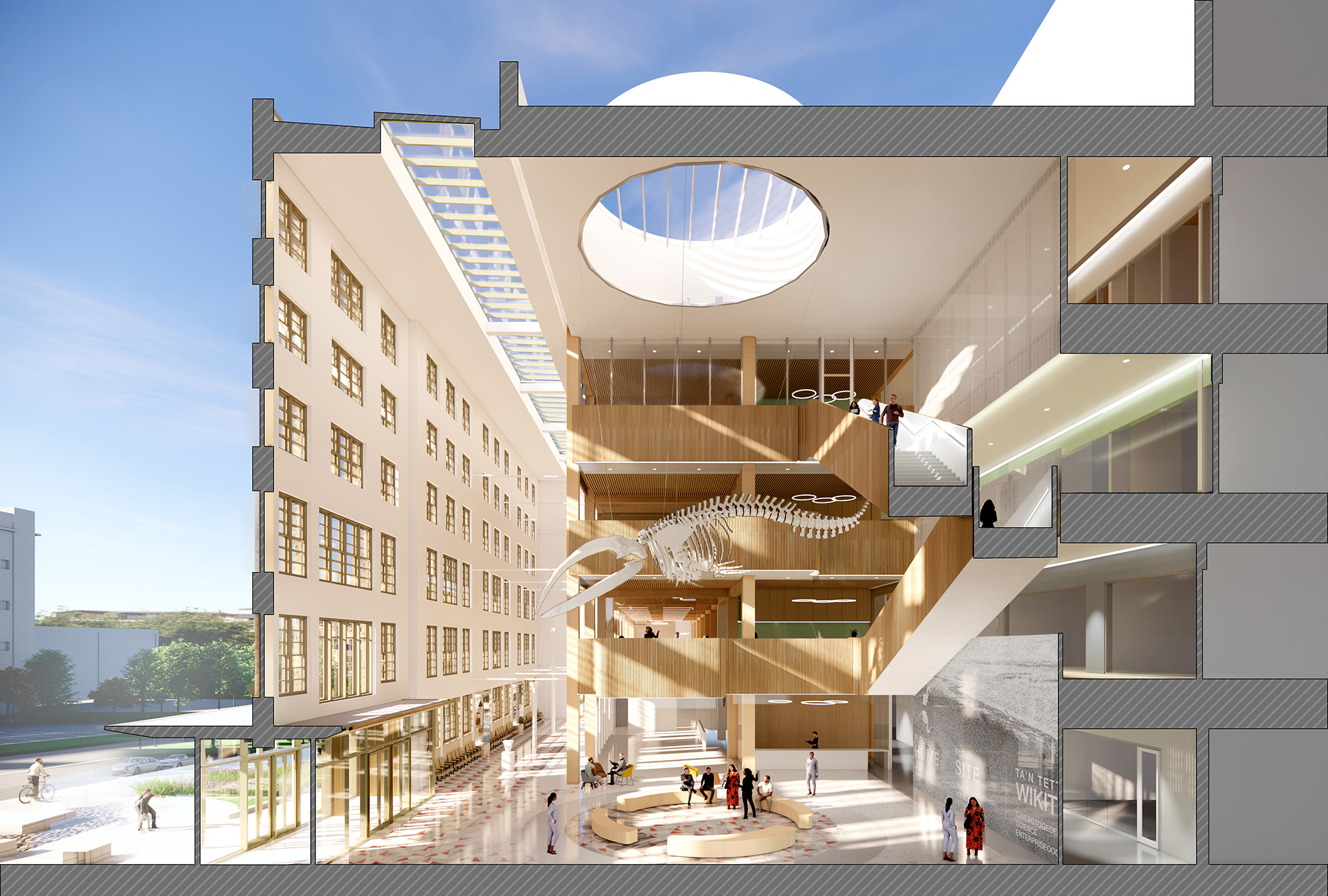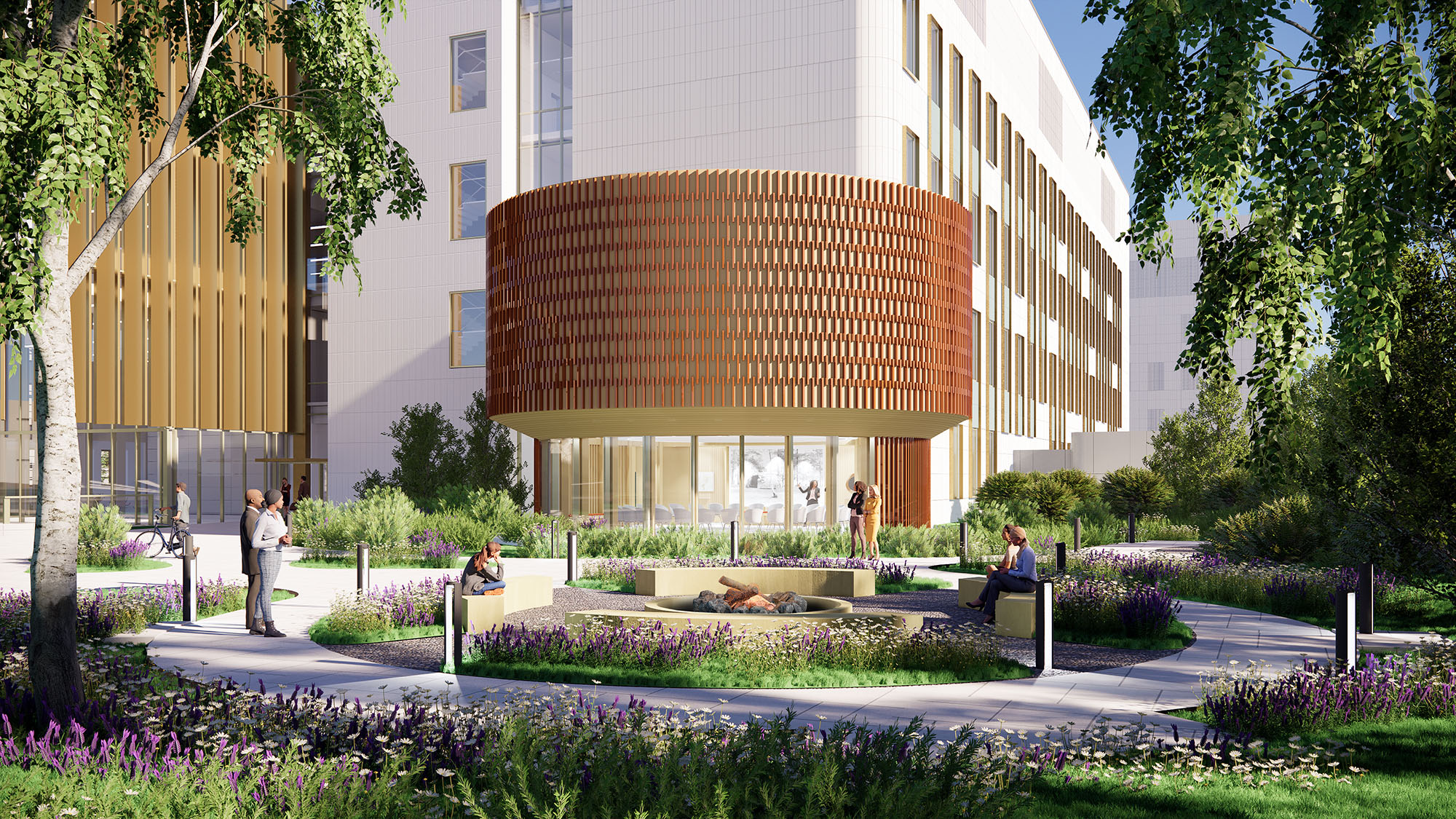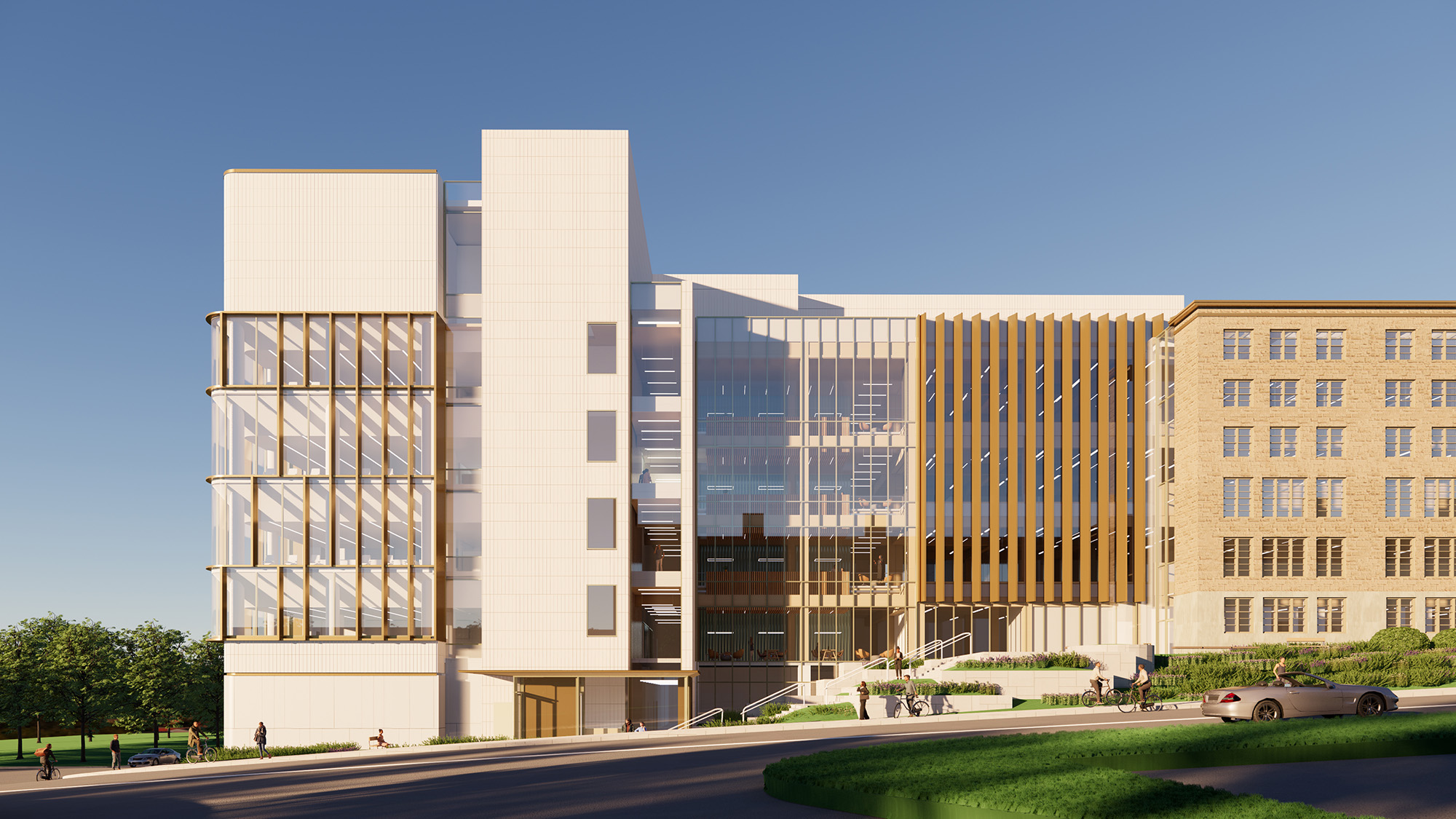Construction on the Atlantic Science Enterprise Centre (ASEC) has begun. Designed by Diamond Schmitt, in association with EXP, the new ASEC facility will provide federal scientists and partners with state-of-the-art space and equipment to collaborate on research opportunities, understand, protect and sustain Atlantic freshwater and coastal ecosystems in Canada. The design of the new building will reflect the heritage of the site, while establishing an open and inclusive environment that makes aquatic science more accessible.
The new ASEC will occupy the former home of the Collège Notre-Dame-d’Acadie which was originally founded and run by the Sisters of Notre-Dame-du-Sacré-Coeur. Opening in 1949, it was the first institution of higher education for Acadian women. The building was purchased by the Government of Canada in 1982 and reopened in 1985 as the Gulf Fisheries Centre.

Through consultation with the Sisters, the prominence of the Collège’s main west heritage façade will be retained and serve as a principal element in Diamond Schmitt’s scheme. It will be centrally positioned and anchor the new facility, with the existing main entrance remaining as the principal entry point. The design will interpret the building’s historical pavilion character and strive to commemorate its origins by integrating and adapting key elements and spaces into the site’s now expanded program.
Atlantic Science Enterprise Centre (ASEC) design
Visitors and staff alike will be welcomed into the building through a full-height, four-storey Atrium and skylit Galleria which will serve as an exhibition space to commemorate the Sisters, provide a place for science on display, recognize Indigenous communities, and serve as a place for gathering. The Atrium and Galleria will act as the connective tissue between the building’s different programming components, while also establishing the importance of the public realm which includes a flexible multipurpose room, Mawiomi—an Indigenous Gathering space, informal and formal meeting spaces of varying sizes.


The net-zero carbon facility will allow the scientific work it will host to be advanced in an energy efficient and sustainable manner. Science areas will be organized around the creation of neighborhoods that group similar types of investigation together, encouraging the sharing of resources and equipment. This plan creates synergies between those groups, while also providing opportunities to foster cross-disciplinary collaborations. Laboratory space will be well lit with daylight and views, be universally accessible and adapt easily to the daily and future needs of occupants as their research evolves.
A key objective of the ASEC project is to establish new partnerships with First Nations and Indigenous groups through extensive engagement and visioning sessions. Led by Mi’kmaq Elder Noel Millea, Indigenous consultation will seek to create a welcoming space for Indigenous employees and visitors alike, and offer an inclusive environment where Indigenous ceremonies, storytelling, meetings, and cultural training can take place. Indigenous ways of knowing and being will inform the building’s design in a number of ways.
Large open spaces, flooded with natural light will offer places of gathering, spaces for learning and collaboration, and talking circles.The use of wood and glazing will provide a sense of warmth and belonging and open up the facility towards the outdoors, creating connections with the natural surroundings. Visual representations of Mi’kmaq, Wolastoqiyik and Passamaquoddy culture will be found throughout the new facility and its landscape.

The goal of the overall planning and design approach of the new Atlantic Science Enterprise Center is to create a collaborative work environment not only within the laboratories, but with the Department of Fisheries and Oceans headquarters and open partner office areas. This extends into the social spaces where collaborative zones are clustered around the atrium, connecting the floors both physically and visually, and on all levels, bringing together the various partners sharing the facility.
The Atlantic Science Enterprise Centre is being built in three phases to allow for the continued use of the existing building during construction. The site preparation work is currently underway as part of the first phase. The construction of the new science wing to the north of the existing building will begin in 2024.
When it is fully occupied in 2031, the Atlantic Science Enterprise Centre will serve over 700 employees from four federal organizations, including Fisheries and Oceans Canada, Environment and Climate Change Canada, the Canadian Food Inspection Agency and the National Research Council Canada. The Canadian Space Agency will participate in ASEC as a virtual partner.
Related Stories
Laboratories | Oct 23, 2024
From sterile to stimulating: The rise of community-centric life sciences campuses
To distinguish their life sciences campuses, developers are partnering with architectural and design firms to reimagine life sciences facilities as vibrant, welcoming destinations. By emphasizing four key elements—wellness, collaboration, biophilic design, and community integration—they are setting their properties apart.
Laboratories | Oct 2, 2024
Trends in scientific research environments: Q&A with Flad's Matt McCord
As part of an ongoing series, Matt McCord, AIA, NCARB, LEED AP BD+C, Associate Principal with Flad Architects, discusses the future of the scientific workplace.
Laboratories | Sep 27, 2024
Traditional lab design doesn't address neurodiverse needs, study finds
A study conducted by ARC, HOK, and the University of the West of Scotland, has revealed that half (48.1%) of all survey respondents who work in laboratory settings identify as neurodivergent.
Laboratories | Sep 26, 2024
BSL conversions: A cost-efficient method to support high-containment research
Some institutions are creating flexible lab spaces that can operate at a BSL-2 and modulate up to a BSL-3 when the need arises. Here are key aspects to consider when accommodating a rapid modulation between BSL-2 and BSL-3 space.
Higher Education | Sep 18, 2024
Modernizing dental schools: The intersection of design and education
Page's John Smith and Jennifer Amster share the how firm's approach to dental education facilities builds on the success of evidence-based design techniques pioneered in the healthcare built environment.
Great Solutions | Jul 23, 2024
41 Great Solutions for architects, engineers, and contractors
AI ChatBots, ambient computing, floating MRIs, low-carbon cement, sunshine on demand, next-generation top-down construction. These and 35 other innovations make up our 2024 Great Solutions Report, which highlights fresh ideas and innovations from leading architecture, engineering, and construction firms.
Laboratories | Jul 3, 2024
New science, old buildings: Renovating for efficiency, flexibility, and connection
What does the research space of the future look like? And can it be housed in older buildings—or does it require new construction?
Mass Timber | Jun 26, 2024
Oregon State University builds a first-of-its-kind mass timber research lab
In Corvallis, Oreg., the Jen-Hsun Huang and Lori Mills Huang Collaborative Innovation Complex at Oregon State University aims to achieve a distinction among the world’s experimental research labs: It will be the first all-mass-timber lab meeting rigorous vibration criteria (2000 micro-inches per second, or MIPS).
Healthcare Facilities | Jun 18, 2024
A healthcare simulation technology consultant can save time, money, and headaches
As the demand for skilled healthcare professionals continues to rise, healthcare simulation is playing an increasingly vital role in the skill development, compliance, and continuing education of the clinical workforce.
Laboratories | May 24, 2024
The Department of Energy breaks ground on the Princeton Plasma Innovation Center
In Princeton, N.J., the U.S. Department of Energy’s Princeton Plasma Physics Laboratory (PPPL) has broken ground on the Princeton Plasma Innovation Center (PPIC), a state-of-the-art office and laboratory building. Designed and constructed by SmithGroup, the $109.7 million facility will provide space for research supporting PPPL’s expanded mission into microelectronics, quantum sensors and devices, and sustainability sciences.

















